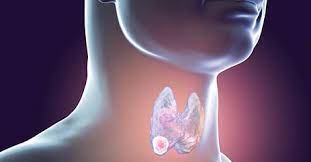Recognizing potential signs and symptoms of throat cancer.
Cancer is a group of disorders in which the body’s aberrant cells uncontrolled proliferate and divide. Tumors are malignant growths made up of these cells. Oftentimes, when individuals refer to throat cancer, they imply cancer of the:
- gullet
- windpipe
- thyroid hormone
Typically, doctors do not refer to throat cancer. Instead, they speak of head and neck malignancies. The National Cancer Institute (NCI) refers to these as:
- Pharyngeal cancer is frequently referred to as oropharyngeal cancer together with oral cavity cancer.
- throat cancer

Compared to other malignancies, throat cancer is rather rare. Oropharyngeal cancer represents around 2.8 percent of all cancer cases and 1.8 percent of all cancer-related deaths, according to the NCI. In the general population, there is a 1.2 percent probability of being diagnosed with one of these malignancies.
Around 0.7 percent of new cancer cases and 0.6 percent of cancer-related fatalities are caused by laryngeal cancer. This form of cancer is predicted to emerge in about 0.3 percent of people.
Types of throat cancer
Type will determine the course of treatment and prognosis for cancer. Which type of cancer cell is present will be revealed by a biopsy. Squamous cell carcinoma, which affects the flat cells lining the throat, is the most prevalent type of throat cancer.
There are two primary types of throat cancer:
Pharyngeal cancer
The pharynx, a hollow tube that extends from beyond the nose to the top of the windpipe, is where this cancer grows. The following are pharyngeal malignancies that manifest in the throat and neck:
- nasopharynx cancer (upper part of the throat)
- oropharynx cancer (middle part of the throat)
- hypopharynx cancer (bottom part of the throat)
Laryngeal cancer
The larynx, or voice box, is where this cancer develops. Cancer may manifest in:
- supraglottis (part of the larynx above the vocal cords)
- glottis (part of the larynx around the vocal cords)
- subglottis (part of the larynx below the vocal cords
- hypolarynx (below the larynx)
Signs and symptoms of throat cancer
Typical warning signs and symptoms of throat cancer include:
- alteration in your voice
- difficulty swallowing (dysphagia)
- slim down
- unwell throat
- a persistent want to swallow your food
- prolonged and potentially bloody cough
- neck lymph nodes that are enlarged
- wheezing
- ears hurt
- hoarseness
Make an appointment with a doctor if any of these symptoms appear and persist.
Causes and risk of throat cancer
The risk factors for throat cancer can vary depending on the type, however the following are some things that could make you more likely to get laryngeal and oropharyngeal cancer:
- smoking
- high levels of alcohol use
- consuming little fruit and veg
- asbestos exposure, in cases of laryngeal cancer
- chewing gutka and betel nut when suffering from oropharyngeal cancer
- a large body mass
- being more advanced, as these tumours typically develop beyond age 50
- having inherited genetic disorders like Fanconi anaemia or dyskeratosis congenita
- possessing specific human papillomavirus types (HPV)
- Oral hygiene practises could be a factor.
According to the American Cancer Society, those who smoke and drink heavily are about 30 times more likely to acquire oropharyngeal cancer than those who don’t, and they’re also significantly more likely to develop laryngeal cancer (ACS).
Approximately 10% of men and 3.6% of women have oral HPV, a sexually transmitted disease, according to the Centers for Disease Control and Prevention (CDC). According to the CDC, HPV may be to blame for almost 70% of oropharyngeal cancer cases in the country.
Males are more prone than females to get laryngeal or oropharyngeal cancer. Statistics from the NCI show that while white individuals have a higher percentage overall, Black men have a far greater rate than both all females and men of other races.
According to a 2014 study, the disparity in laryngeal cancer survival rates between American males of colour and whites increased rather than decreased between 1975 and 2002. According to the study’s authors, possible causes include socioeconomic circumstances, a later stage of diagnosis, and a lack of access to effective therapy.
Preventing throat cancer
Although throat cancer cannot always be prevented, there are things you may take to lower your risk:
- Avoid or give up smoking and using tobacco.
- track your alcohol consumption
- reduce your intake of added fats, sweets, and highly processed foods while consuming a nutrient-rich diet that emphasises fresh fruits and vegetables.
- maintain a regular exercise schedule
- To help lower your risk of developing an oral HPV infection, talk to your doctor about obtaining the HPV vaccine.
The NCI states that the highest risk factor for acquiring these malignancies is a combination of smoking and alcohol consumption. Thus, the two main approaches to prevent head and neck cancers are to limit alcohol use and quit smoking.
Treatment options for throat cancer
You’ll receive treatment from and have input from a variety of specialists, including:
- a surgeon who specialises in cancer who performs operations like removing tumours
- a radiation oncologist who uses radiation therapy to treat your cancer
- a pathologist who analyses tissue samples taken from your biopsy
- during a biopsy or surgery, an anesthesiologist will give anaesthetic and keep track of your health.
Options for treating throat carcinoma include:
- surgery
- radiation treatment
- chemotherapy
Depending on the cancer’s stage and other considerations, your doctor may recommend a different course of treatment.
REFERENCES:
- https://www.healthline.com/health/cancer-throat-or-larynx
- https://medlineplus.gov/throatcancer.html
- https://www.mayoclinic.org/diseases-conditions/throat-cancer/symptoms-causes/syc-20366462
- https://www.webmd.com/oral-health/guide/throat-cancer-symptoms-treatments
- https://my.clevelandclinic.org/health/diseases/23136-throat-cancer
For more details, kindly visit below.